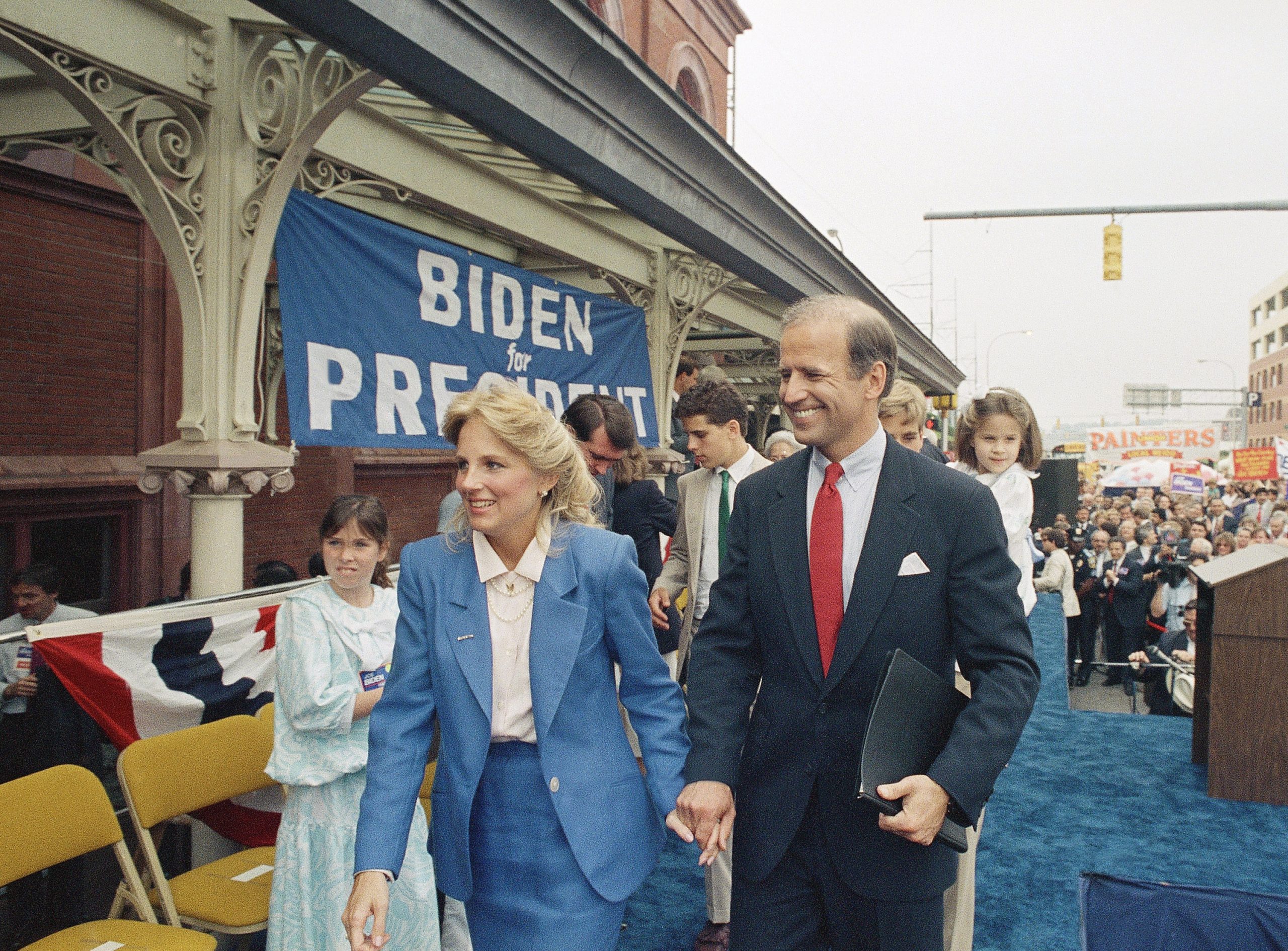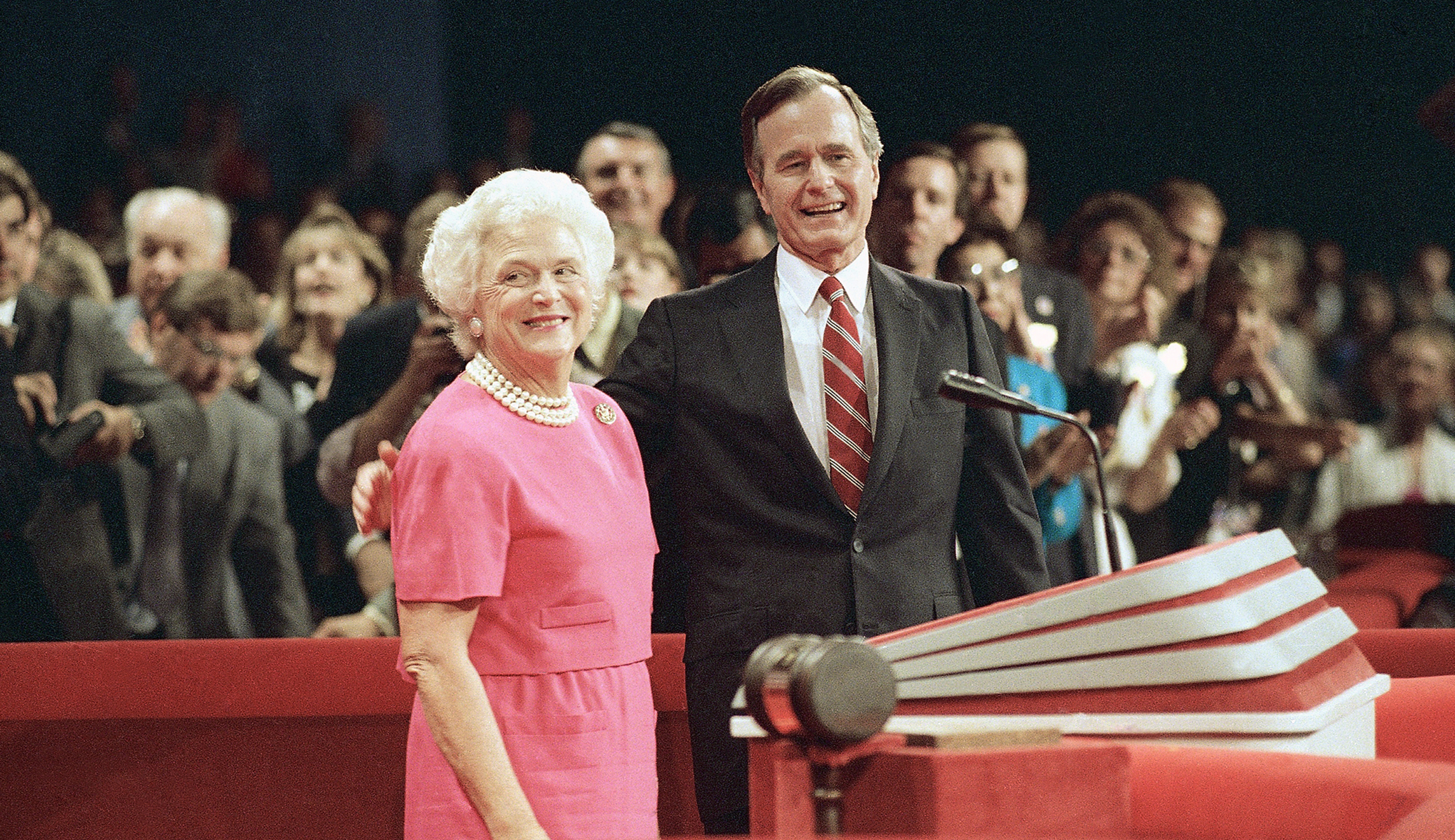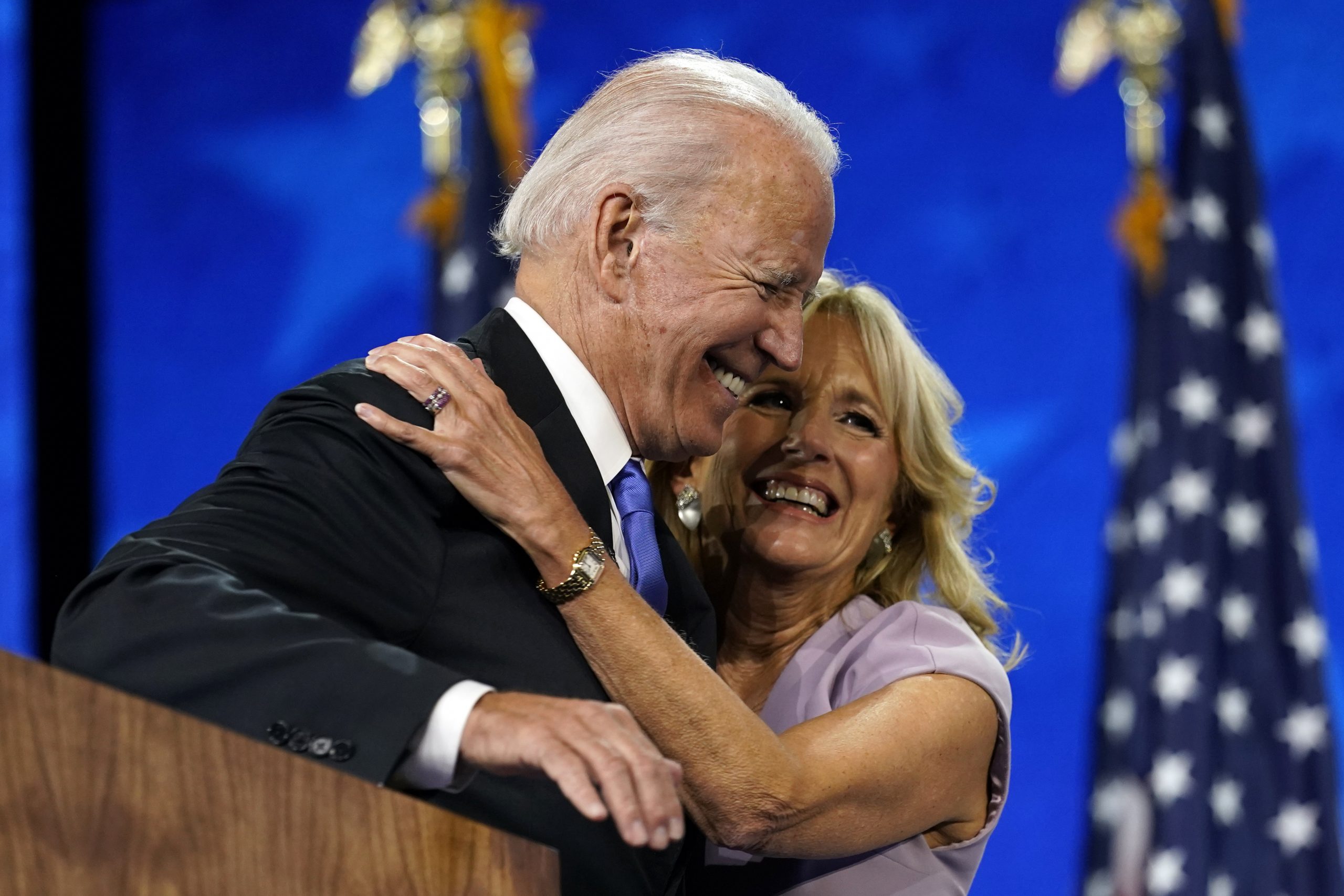Some might say Jill Biden has been a first lady in the making for 40 years.
The 69-year-old is no stranger to public life, having married President-elect Joe Biden when he was still a junior senator from Delaware in 1977. Since then, Biden has ascended with her husband to the highest ranks of political office, undergoing the challenges and demands of being a political wife.
Already having national recognition from her eight years as second lady during her husband’s tenure as vice president from 2009-2017, Biden is now preparing to become the country’s leading woman as first lady, a position those closest to her say is no surprise.
“The four of us are amazed, like, gee, our sister could be first lady. But … first lady is a natural transition for her,” Biden’s sister, Bonny Jacobs, told the Philadelphia Inquirer a month before Election Day.
Biden was raised in the Philadelphia suburbs and was the oldest among five sisters. Early on, she developed a passion for teaching and has remained an educator for more than three decades.

She focused on community colleges and teaching young people at the cusp of their life and career. Before she made her first move to Washington, D.C., in 2009, Biden taught at high schools and community colleges in Delaware and earned her doctorate in education at the age of 55 from the University of Delaware in 2007.
“This is one area where I believe I can make a genuine contribution,” Biden said of education at a first ladies forum in 1987, ahead of Joe Biden’s first presidential campaign. “I am committed to making the case for better education in America.”
Karen O’Connor, a political science professor at American University, says Jill Biden will likely shine a light on community colleges, often considered one of the most accessible and affordable pathways to higher education.
“She is going to very heavily bring an understanding of the positives that community colleges offer to millions of people from various backgrounds,” O’Connor told the Washington Examiner.
In addition to education, Biden is expected to focus on issues related to cancer research and serving military families and veterans, the latter revolving around an initiative she took on with first lady Michelle Obama to help military families become engaged in community activities.
Biden’s also set on making history by vowing to continue her full-time teaching career while she carries on the expectations of her new office.
She said she plans to commute from the White House to the Northern Virginia Community College, where she’s taught English for a decade. Though she took the same approach when she was second lady, Jill Hummer, a political science professor at Wilson College who focuses on first ladies, says her ambition to continue her career in the highest spousal office is one that sends a strong message about a changing society.
“It’s a progressive message certainly about women’s rights and roles,” Hummer told the Washington Examiner. “The office has been, of course, under scrutiny as kind of an outdated and throwback position, antiquated, more of a traditionally feminine role.”

The ever evolving role of first lady
Traditionally, first ladies have been responsible for most of the domestic duties of the White House, including social hostessing, outdoor renovations, and organizing state dinners.
The East Wing, which has long held the office, is largely integrated with the West Wing of the president, and funding for the first lady’s duties are mandated in the annual White House budget.
Because there are no constitutional requirements first ladies have to meet in their public service expectations, the role itself has historically revolved around individual personalities. In recent years, however, most are expected to take on a specific project while they hold the title.
First lady Melania Trump started the “Be Best” initiative focusing on the well being of youth, social media usage and online safety, and opioid abuse. Obama spearheaded the “Let’s Move!” program to combat childhood obesity. Laura Bush, a former teacher and librarian, championed education and literacy.
But first ladies also have to walk a fine line not to overstep their boundaries. Hummer cites public response to Hillary Clinton’s ambitious plan to implement universal healthcare in the 1990s as an example of what was viewed at the time as an overreach of the office.
“You do need to be careful when you choose a cause or choose a project that you don’t overstep, and you do need to be mindful of what the public is willing to accept,” Hummer said. “There’s still some perception issues. First ladies can’t just do whatever they want to.”

At a generational level, the office of the first lady has also evolved as women as a whole have gotten more opportunities to further their own careers and education. This can also be seen in the changing platforms of both major political parties when it comes to the role of women.
Hummer says Barbara Bush’s emphasis on family values when she was in the office between 1989 to 1993 is likely an example of a more antiquated emphasis from women who have held that role in recent years. During the 1992 campaign for her husband, Bush even spoke on the topic during a “Family Values Night” at the GOP convention.
“You don’t see the Republicans of today look like the Republicans of 1992,” Hummer said. “They’re much more accepting of women in careers and professions, so you’re not seeing the family values as much … First ladies do have to be mindful about what the broader political parties believe about women’s rights and roles, and I do think that you see the overall party belief’s about women’s rights and roles kind of reflected in how the women behave.”
First ladies in the public eye
As much as first ladies emphasize what they do behind the scenes, there’s been a long tendency of public and media scrutiny on the image of the first lady.
Though the media landscape has adjusted in how they cover women in the public eye, especially as more enter into higher ranks of political office, focus on image and appearance is still part of the role, Hummer says.
There’s a history of coverage in particular related around what the first lady is wearing on Inauguration Day and what kind of gown she dons at the ball. Wardrobe optics can also cause a public frenzy, like when Melania Trump wore a jacket that read, “I really don’t care, do u?” on her way to visit children held in detention centers at the border.

“They do pay a good deal of attention to what they’re wearing and their appearance because I think they know that if they let it slide, it will become a topic of media attention,” Hummer said. “I think that it’s gotten a little bit better, but I don’t know if it’s gone away.”
Beyond the focus on the physical, first ladies can be subject to other kinds of harsh criticism, with the most recent example being the controversial op-ed in the Wall Street Journal that questioned Biden’s use of referring to herself as a doctor, over her education degree, a criticism that “surprised” Biden.
O’Connor said she believes that kind of critique was centered more around gender and believes Biden will likely redefine the role of first lady, a move that could spur similar attacks.
“If we had a fictitious female president and her husband was a Ph.D., no one would question it,” O’Connor said. “I think as people know [Biden’s] story better, it will resonate even more with a wide range of women. I do think that she is going to be very involved.”

